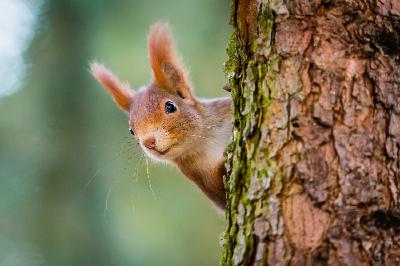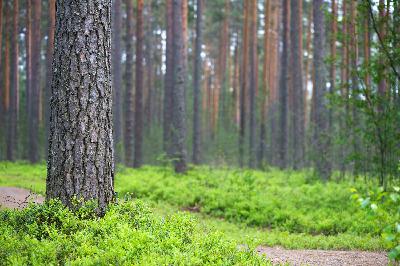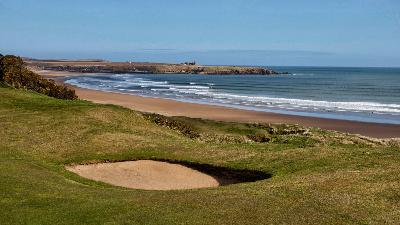UTTS #068 Saving the Scottish Wildcat
Description
sqs-block-image-figure
intrinsic
">

</figure>
There is a battle raging across the Scottish Highlands - the battle to save the Scottish Wildcat, aka the Highland Tiger. News this Spring of the birth of three new wildcat kittens at the Aigas Field Center in Inverness-shire is a welcomed sign of progress in a captive breeding program that is just one prong of a multi-pronged approach to save one of Britain’s last predators. It’s called the Scottish Wildcat Action Plan. Such a plan is needed because the Scottish Wildcat is perched on the precipice of extinction.
To the untrained eye the Scottish Wildcat may appear like an oversized tabby cat, you’re everyday moggy as cats are known in Britain. But in fact they are fierce predators. Descended from European wildcats, they were isolated some 7,000 to 9,000 years ago when the land bridge connecting the British Isles to continental Europe was submerged by the rising sea. Once numbering in the thousands, their population has dwindled as they were widely hunted and as habitat change, both naturally and manmade, pushed them into an ever shrinking range, currently including the Cairngorms, the Black Isle, Aberdeenshire and Ardnamurchan. The Scottish Wildcat as a species was given legal protection in 1981.
<figure class="
sqs-block-image-figure
intrinsic
">

<figcaption class="image-caption-wrapper">
Image credit: Scottish Wildcat Action
</figcaption>
</figure>
Surveying over the past 10 years has brought the plight of the wildcat to the forefront with informed estimates suggesting there are no more than 30 to 100, and quite possibly fewer, living in the wild today. The Scottish Wildcat Action Plan was adopted in 2013. It includes more than 20 organizations working in a concerted effort to save the wildcat. One of those is Aigas House and Field Center near Inverness.
<figure class="
sqs-block-image-figure
intrinsic
">

<figcaption class="image-caption-wrapper">
Aigas House and Field Center hosts multiple nature conservation projects, provides educational programs for schools, and is an eco-tourism destination in the Scottish Highlands.
</figcaption>
</figure>
Like the Wildcat it is trying to save, the estate near Beauly, Inverness-shire, in the Scottish highlands, Aigas House and Field Center – was itself once almost extinct. It was standing derelict when purchased by Sir John Lister Kaye, a prominent conservationist, naturalist and nature writer, in 1976. Today it is a combination nature conservation project base, an educational center for schools, and an eco tourism destination hosting hundreds of guests annually. It is also the holder of a private collection of Scottish Wildcats. Its captive breeding program is now part of Scottish Wildcat Action.
Wildcats have been at Aigas since 2011 – pre-dating Scottish Wildcat Action. That they are there at all is thanks to one Dr. Russell Coop – a bit of a maverick naturalist who once bred and released wildcats in the Dumfries and Galloway region of Scotland. A friend of Sir John, Dr. Coop passed on his legacy with wildcats in the form of two breeding pairs when he was no longer able to continue.
As one of multiple private collections, the Aigas wildcats are overseen by the Royal Zoological Society and a studbook keeper who coordinates the pairing of wildcats for breeding purposes. The eventual goal of the project is to release captive born wildcats back into the wild to rebuild the population, first in Scotland, then eventually across Britain. A principle danger to the wildcat’s survival is hybridization - mating with feral domestic cats. Indeed, this is such a problem, and has been for the past 100 years or more, that Ben Jones, staff naturalist at Aigas says the odds are long that there is even such a thing as a 100% pure wildcat living wild in Scotland today. As a result, not only is breeding a new population necessary, so are efforts to control the feral cat population through a program of trapping, spay/neuter, vaccinate and release. Education about proper pet ownership etiquette is another essential part of the Scottish Wildcat Action Plan.
View fullsize

View fullsize

View fullsize

View fullsize
<img alt="WildcatsSpring.2020extracompressed3©AigasFieldCentre.jpg" class="thumb-image" src="https://images.squarespace-cdn.com/content/v1/5567a228e4b004726f799b1
























